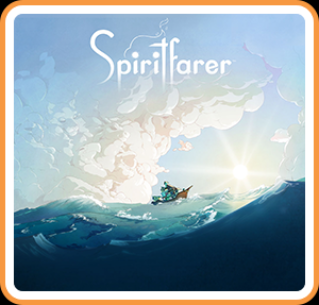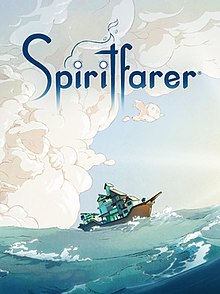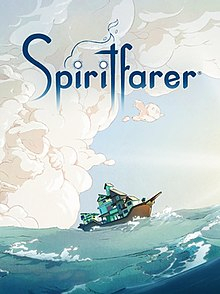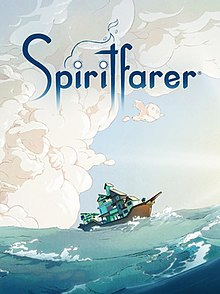
Spiritfarer (NS) - Review
by Evan Norris , posted on 14 September 2020 / 5,002 ViewsThunder Lotus Games just keeps getting better. It first made a splash with its premier game Jotun, then upped the ante with its superior sophomore effort Sundered. The Montreal-based indie studio has now crafted its best, deepest, most personal game in Spiritfarer, an action-adventure-simulation hybrid that treats that most delicate subject — death — with an incredible amount of maturity and grace. While some of the simulation elements prove repetitive and the journey starts to run out of steam in the final few hours, the overall experience ranks among the better games of the year.
Spiritfarer takes place in a limbo of sorts: a domain populated by souls passing between the mortal world and the afterlife. You play as Stella, a charming young woman who assumes the role of Spiritfarer, i.e. ferrymaster to the deceased. Stella is responsible for locating lost souls and caring for their needs before they're ready to slip away into death.
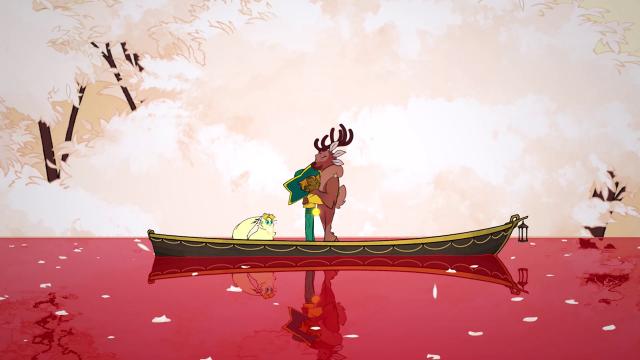
Death is a heavy and potentially dark topic, but the writers at Thunder Lotus approach the issue with extraordinary warmth. Spiritfarer above all celebrates life, even as it confronts its impermanence. That said, this is an exceptionally sad game. You will eventually need to say goodbye forever to lost souls you've befriended, fed, hugged, and lived alongside. When a cherished companion asks you to take them to the Everdoor — the gateway to the beyond — you'll feel a pit in your stomach. When they vanish from the world, you may cry. Think of the sting of losing a favorite neighbor in Animal Crossing and multiply it by 10.
Ultimately, Spiritfarer tells one of the most affecting stories of 2020. The game will linger with you long after it's over.
Not only does Spiritfarer excel in storytelling, it shines in terms of gameplay systems. Spiritfarer represents a very successful combination of exploration, questing, crafting, and life simulation. As Stella, you'll travel across the sea to multiple islands, discovering wayward souls, buying items at shops, harvesting wood and ore, taking on side-quests, and making sure your passengers are appropriately housed, fed, and loved. What's more, all these functions are experienced in tandem, instead of in discrete phases, thanks to Thunder Lotus' most inspired conceit: Stella's ferry.
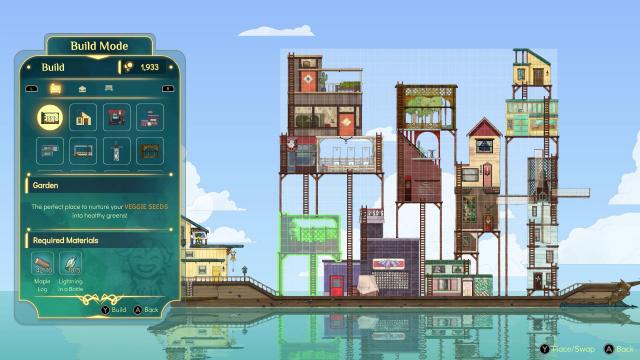
The ferry is essentially a floating, modular village. It is your conveyance, a home for wandering souls, and the foundation on which you will build your miniature society. It will get you from island to island, yes, but it will also house your kitchen, foundry, garden, sawmill, orchard, etc. Once you secure the correct blueprints you can build several different installations, which will provide the necessary materials to feed your guests, erect new buildings, and — in true action-adventure tradition — upgrade the ship with special items that allow safe passage through several gated-off regions of the map.
There are so many fun diversions on the ferry that it's easy to get distracted from the main quest line. You can unlock recipes in the kitchen, ferment cabbage in the cellar, smelt ingots in the foundry, and transform fibers into thread at the loom — among many other activities. There's a wonderful logic to everything on the boat as well. Olives from the orchard can be pressed into olive oil in the crusher. Rice harvested from the field becomes rice flour in the windmill which combines with eggs to make a meal of pancakes for a hungry guest. There's a lot of entertaining guesswork and experimentation involved.
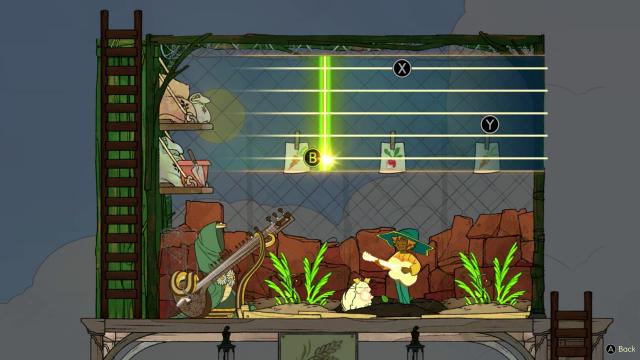
Not only that, many of the ferry's installations come with their own mini-games. In the foundry you need to work the bellows so that the process doesn't overheat, while in the sawmill you must trace the lines of the saw blade to produce the most planks. There's also an amusing fishing mini-game where careful timing and patience are required to haul in some of the feistier fish.
The one downside to all these activities is that after a certain point they can feel like chores. In order to obtain some of the more expensive ship upgrades you'll need to accumulate a lot of materials and then spend a good chunk of time transforming them into something useful. It can get a bit monotonous. In the same way, attending to passengers onboard can settle into a repetitive, unthinking rhythm.
Speaking of passengers, there is a bit of an imbalance between your first set of guests and your second set. You might find yourself connecting much more deeply with the first five or six souls and failing to establish a meaningful affinity with the final few. This is due in part to the fact that earlier passengers have an established relationship with Stella and in part due to the reserved or rough personalities of later arrivals. Overall, Spiritfarer packs a far greater punch in its first 25 hours than its final five.
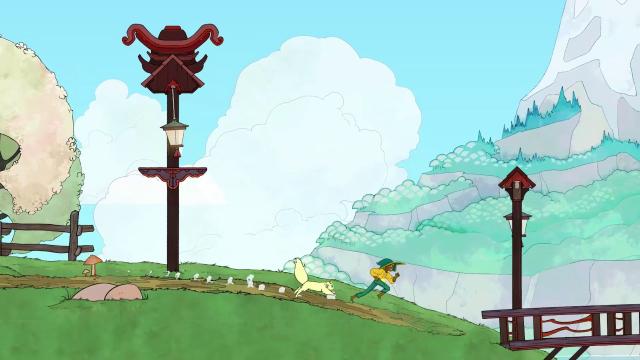
Even if things on the boat get a little stale, there is so much to discover elsewhere: on the open ocean and its many islands. There are patches of water that feature special events, like meteor showers or lightning storms, plus a traveling salesman (think Beedle from The Wind Waker) who buys your unwanted goods. On the islands, meanwhile, there are treasure maps to find, ship upgrades to uncover, townspeople to assist, and pages of dialogue to absorb. Spiritfarer is a game packed with the thrill of adventure and discovery.
To complete the main quest in Spiritfarer and fulfill your role as ferrymaster you'll need to spend somewhere between 30 and 35 hours. To experience every quest, character, and item the game has to offer would take many more hours. Should you wish to while away the time with a friend, Thunder Lotus has you covered. A local co-op partner can assume control of Stella's fluffy white cat Daffodil in order to help explore and complete tasks. Due to its intimate nature, Spiritfarer is best experienced as a solo experience, but the inclusion of co-op is nice nonetheless.
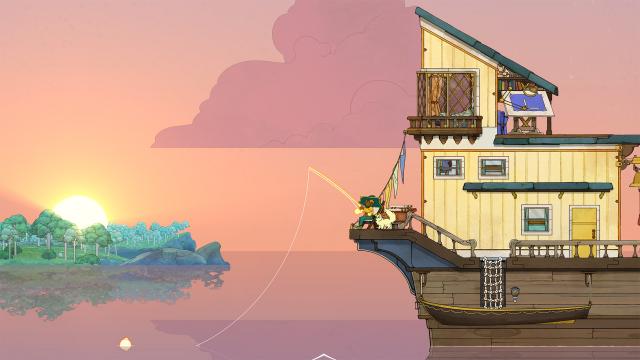
Finally, no Thunder Lotus game review would be complete without some commentary on the studio's trademark hand-drawn graphics. As was the case with Jotun and Sundered, the art in Spiritfarer is striking, lavish, and evocative. This is one of the prettiest games of the year, no question. The original soundtrack, composed by Maxime Lacoste-Lebuis, AKA Max LL, is equally lovely. There are a bunch of outstanding tunes here; some fun and adventurous, others wistful and serene. The end credit song, "What Will You Leave Behind", will bring you to tears.
Thunder Lotus Games gets bigger and better with each new project, and Spiritfarer is no exception. This is the studio's most intricate and ambitious title to date: an entertaining, energetic action-adventure-simulation game set inside a thoughtful treatise on life, death, grief, and letting go. It's not flawless — a few chores are monotonous and the story starts to lose momentum in the final act — but it's a beautiful experience, filled with varied and engaging content, wrapped in gorgeous art and music, and populated with memorable characters and moments that will stay with you for a lifetime.
VGChartz Verdict
8
Great
This review is based on a digital copy of Spiritfarer for the NS, provided by the publisher.
























